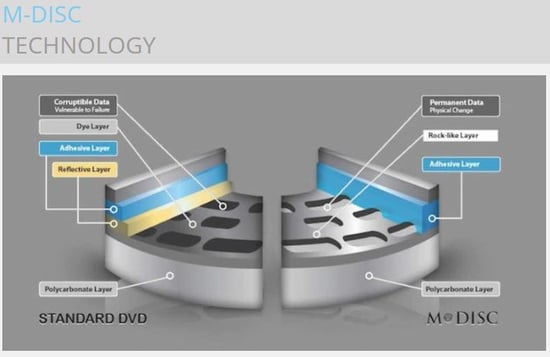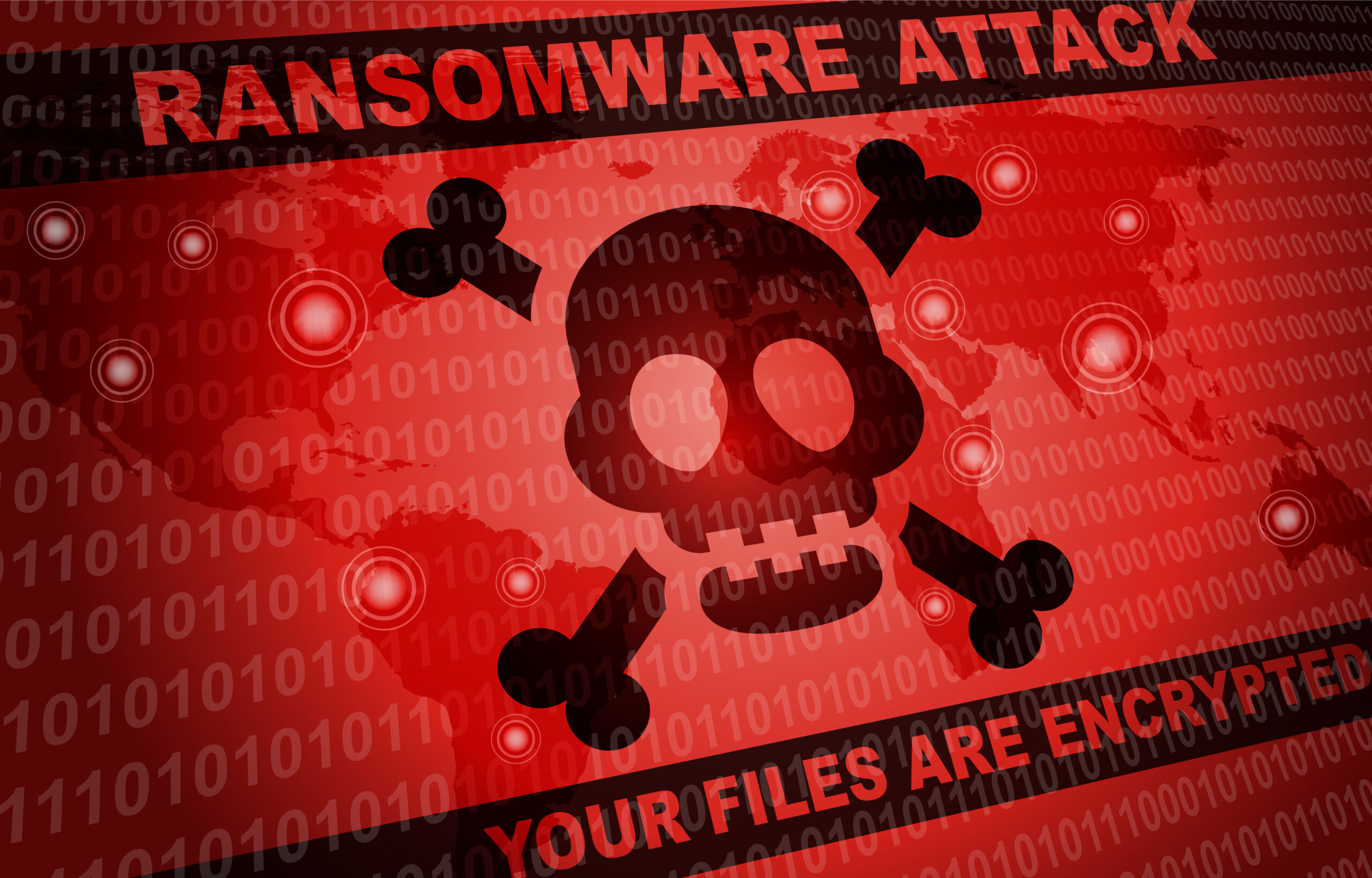How many times over the years have you burned files to a CD, DVD or Blu-Ray only to discover when you try to read the media, the optical drive makes that familiar ‘scrubbing’ sound or high speed spin-up followed by some sort of error or when you had a CD in your car it would say ‘no disc’ or just eject the media? Come on, show of hands. You know it has happened to you or someone you know and that data is gone, be it music, photos, documents, CAD drawings, etc. Optical media once held the promise of being safe, and yet it wasn’t. Archival media helped the situation, but it had issues too and after the problems with those original burnable discs, everyone really wondered about that 100 year archival life. There are other ways to store files, but they have their issues too. Let me elaborate.
Practical Data Storage Lifespans
“Media life” has always been an issue with all types of storage options. Vendors typically have wildly varying numbers for the life span of their product, but in most cases, the times are shorter since people are using the devices in real-world conditions. For reference, here are a few types of storage devices that are or were popular at one time, including the average life expectancy, etc. Not mentioned in this table is Cloud Storage. When files are stored in the cloud, the data is secure, but not really under your control. Storage space may be free and unlimited today, but could cost you tomorrow, or the size could be capped. Many found this to be true with Microsoft and OneDrive. Others were faced with lost data with the cessation of operations by dotCloud and Wuala. Given these problematic situations, it is safe to say that even using the cloud to store that important data in perpetuity is not always safe for the long-term just as with any physical media. So, what is the solution?
|
Media Type |
Vendor Projected Life Expectancy |
Practical Life Span |
Death Indicator |
|
Zip Disk |
2 Years |
2 Years |
Click of Death |
|
5¼" Floppy Disk |
2 Years |
2 Years |
Head Seeking or Clicks |
|
3½" Floppy Disk |
2 Years |
2 Years |
Head Seeking or Clicks |
|
CD-R / CD-RW |
3 Years |
2 -5 Years |
Never Comes Ready / High Speed Spins |
|
USB Flash Drive |
10 Years |
5 - 10 Years |
Memory Decay / Loss (Happens from use, not time) |
|
DVD-R |
30 Years |
2 - 5 Years |
Never Comes Ready / High Speed Spins |
|
Hard Drive |
34 Years |
3 - 5 Years |
Head Crash |
|
Solid-State Hard Drive |
51 Years |
< 10 Years |
Memory Decay / Loss (Happens from use, not time) |

Dye is why they Die
The biggest problem with Optical media is the dye. Standard and Archival Recordable CD’s and DVDs both burn data into an organic dye layer that is held inside a disc. The composition of the disc varies in that some are a sandwich of polycarbonate layers, some have a top lacquer layer and others a printable ink jet layer. Some have a combination of all of the above, though the more expensive or archival discs usually do not use an outside lacquer layer. Organic dyes start to degrade and fade as soon as they are written in the media. Exposure to sunlight and temperature extremes can accelerate this degradation process, ultimately leading to a disc that cannot be written. The condition of a piece of burned media being ‘suddenly’ unreadable is “data rot.” This problem is so severe that the National Archives warns that the reliable shelf life of a standard recordable DVD is somewhere between 2 and 5 years. This graphic illustrates the difference between standard optical technology and that of the M-DISC™.

No Die, I mean Dye Here!
The M-DISC™ contains no organic dyes. That is right. Instead of burning a hole through a layer of die in a disc, the M-DISC™ etches the data to the media. The M-DISC™’s data layer is composed of rock-like materials known to last for centuries. The M-DISC READY™ Drive etches the M-DISC™’s rock-like layer, creating a permanent physical data record that is immune to data rot. The stability and longevity of the M-Disc DVD has been proven in rigorous tests according to the ISO/IEC 10995 test standard for determining data lifetime of optical media. These are the same tests that actually determined the life for standard and archival media.

Rock-Like, what does that mean?
 I do a lot of research before I consider purchasing a product. I am a skeptic, so I thought this must be some kind of clever marketing ploy. I mean, the disc is not made of rock (visions or Fred Flintstone chiseling a disc pop briefly into my head). So, really, why do they call the disc data layer rock-like? Well, it turns out the answer is simple; It is a great description! The M-DISC™ data layer has several properties comparable to those of common rocks, including the composition of the data layer, its morphology, and the changes it undergoes during the data-writing (or as they describe it during the etching process). Instead of an organic dye layer, the M-DISC™ data layer is composed entirely of inorganic materials and compounds including metals and metalloids. To quote the M-DISC™ literature it “… contains several of the materials and compounds common to rocks including oxides of silicon and rare-earth metals. It is a solid from room temperature to upwards of 500°C, and it is stable in the presence of oxygen, nitrogen, water, and other deleterious chemicals that may be found in ordinary storage environments.”1 Wow, that really is Rock-Like. So how does it really work?
I do a lot of research before I consider purchasing a product. I am a skeptic, so I thought this must be some kind of clever marketing ploy. I mean, the disc is not made of rock (visions or Fred Flintstone chiseling a disc pop briefly into my head). So, really, why do they call the disc data layer rock-like? Well, it turns out the answer is simple; It is a great description! The M-DISC™ data layer has several properties comparable to those of common rocks, including the composition of the data layer, its morphology, and the changes it undergoes during the data-writing (or as they describe it during the etching process). Instead of an organic dye layer, the M-DISC™ data layer is composed entirely of inorganic materials and compounds including metals and metalloids. To quote the M-DISC™ literature it “… contains several of the materials and compounds common to rocks including oxides of silicon and rare-earth metals. It is a solid from room temperature to upwards of 500°C, and it is stable in the presence of oxygen, nitrogen, water, and other deleterious chemicals that may be found in ordinary storage environments.”1 Wow, that really is Rock-Like. So how does it really work?
Engraving Data in Stone
The laser in your DVD / BD Writer turns on and starts burning the data from your file to a piece of M-DISC™ media. Your data gets engraved in ‘stone’. The inorganic data layer materials of the M-DISC™ undergo a physical change during the write process in the same way that rock materials change under the influence of heat and other geologic processes. Again, to quote the M-DISC™ literature as I really cannot do a better job of explaining the process, “When the data layer is written by a focused laser, the intense heat generated causes the innermost layers to melt and to move away from the laser spot, creating a hole in the data layer. The materials found in rocks would react to the laser in a similar way, melting, flowing or ablating away, in contrast with the organic dyes used in typical Blu-rays and DVDs, which would merely decompose under the same thermal conditions. Furthermore, when the melted portions of the M-DISC™ data layer cool after writing, the material surrounding the written voids forms a polycrystalline structure that is again reminiscent of the microcrystalline structure of many common rocks.”1

What About Compatibility?
The M-DISC™ media is compliant with most DVD and is all Blu-Ray readers. Drives that are certified to burn M-DISC™ media have the M-DISC™ notation on the drive. If you are using an M-DISC™ DVD, it must be engraved in an “upgraded” DVD drive. M-DISC™ Blu-ray media should work in a standard Blu-ray burning drive. The M-DISC™ Blu-ray disc was designed to work with all Blu-ray drives and to fit within the Blu-ray standard specs. In fact, it certifies that the M-DISC™ BD-R has been through this test program and passed as 100% compatible and compliant with all of the Blu-ray specifications. M-DISC™ DVDs work with most DVD burners, and M-DISC™ Blu-ray discs are compatible with any Blu-ray writer. To avoid confusion when purchasing a drive, just look for the M-DISC™ logo on the box.
1 Information from http://www.m-disc.com
M-DISC™ Permanent by Design

The people at Millenniata, Inc. designed M-DISC™ to be permanent. For everyone who likes seeing a cutting edge technology developed here in the United States, Millenniata, Inc. was co-founded by Brigham Young University professors Barry Lunt and Matthew Linford, along with CEO Henry O'Connell and CTO Doug Hansen. The company was incorporated on May 13, 2010 in American Fork, Utah. The intent of the scientists and engineers who developed the M-DISC™ was to develop a permanent method of storing data in the modern digital age, an equivalent of engraving in stone. That characteristic and feature of rock to survive for tens of thousands of years without change were the inspiration behind the product.
Breaking Technology
The purpose of this article is to make you aware of this technology. I am not affiliated with Millenniata or the private label makers of any M-DISC™ media. I am a business and personal digital data consumer just like you who is always looking for a better, more permanent solution for my data and that of my company to make sure that what is important is saved. The M-DISC™ technology and product is truly something new and worth looking at! If you have questions or comments about this article, contact me.





Comments